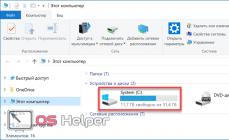How to create a logo correctly
using Logaster
Creating a logo and corporate identity using Logaster is as easy as shelling pears. All you have to do is enter the name of your business and our smart algorithms will generate attractive logo options. Find out how to get your design quickly and easily in this article!
1 Enter the name of your business.
It all starts with a simple step. You need to enter the name of your company and click on the "Create" button. Ready? The magic is about to begin!
2 Provide additional information.
Now you can include additional information about your company to make the design more relevant to your business. How to do it?

To begin, choose an industry in which you specialize. Logaster offers logos for different areas of business. By clarifying your specialty, you'll receive a personalized design that instantly communicates to your customers what products or services you offer.

Then add a tagline. The slogan contains the message that you want to convey to your partners and clients. This is one of the most important aspects of your branding.

Finally, choose the best color scheme. Are you ready to see your updated logo taking into account the specified parameters? Then click on the "Create again" button!
3 Select the best option.
Choose any design you like. Click "View and Download" to see how your logo will look on different media. To see more logo options, click "Show more".
Can't make a choice? No problem! Just add all the logos you like to “Favorites” to return to them later!


5 Edit the logo
Click on the edit icon in step 2 of creating a logo (on the pop-up window, after clicking “Download and view”) or after logging into your account.

What can be edited:
![]()
To do this, click on the current icon and select a new monk using the search function on the left sidebar.

Click on the text and select a different font from the menu.

Change the color, size, slant, text style (uppercase/lowercase), character spacing.

You can add a slogan or change the style of certain letters/words.

Move layers (icons, text) up/down, add a mask.

Additionally
To cancel changes, use the "Reset All" button or the "Step Back" or "Step Forward" options.
After editing, save the changes.
6 Choose the optimal tariff plan
Don't know which tariff plan to choose? Here are the most important points:
XS Raster logo on a white background
(1 file) Full size logo for use on the web. As part of this plan, we offer a 2000 x 2000 pixel logo file in PNG format. If you only need a logo on a white background and only for a website or for use on social networks (with the specified size), then feel free to choose the XS plan.
A suitable option for “trying on” a logo at the initial stage of business.
Download example M Plan S + Business Cards + Social Networks
Includes the entire set of logos from Plan S plus business card files (PDF, SVG, PNG) and versions of the logo optimized for social media design (Facebook, YouTube, Instagram, Twitter, VK, LinkedIn).
The best option when you need online branding and business cards. Download example
L Form style
(temporarily unavailable)
A complete set of corporate identity elements for business in raster and vector formats: logo, business card, logo images for social networks, letterhead, favicon, corporate pattern and much more.
Ideal option for business.

1. Download example

2. 7 Download the logo

3. To download files with your logo, go to your personal account:
Select your logo in the top left corner. If you don't see your logo, click "All Logos". Logaster will show you all the emblems that you have ever created or added to your Favorites.
Once you open the logo page, select the logo option you want. Logaster offers the logo in 5 color schemes and 6 layouts. Click on the one you want!
A new window will appear on the screen. Click on the button with the desired format to download the logo. Use the hints on the buttons to understand what logo format you need.
In general, it is amazing how quickly the Internet has changed our world. Just 8-10 years ago, only large companies or well-promoted brands had their own logos. And the owners of medium and small businesses limited themselves to “flashy” names like “World of Windows”, “ABC of Furniture” and other “Empires”. By the way, in Samara we still have a chain of “Planet Second-Hand” stores, and this name brings wild delight to all my out-of-town friends.
But the World Wide Web has turned everything upside down in this matter as well. If you have at least one domain, you've probably already thought about how to write it beautifully. And it is right. Every webmaster wants people not only to visit his site, but also to remember it. The logo plays an important role in this matter, so let’s figure out whether it’s possible to make it yourself and how much it costs to start your own brand.
1. Free online services
The easiest, fastest and completely free way is to generate a logo using a free service. There are a dime a dozen of such sites in the bourgeois internet, maybe there are also in RuNet, but I haven’t found them yet.
- www.logaster.ru is a very convenient and simple online logo generator. In just a few minutes you can create a beautiful logo, and then download it in all popular formats. There is a possibility of free and paid downloading of logos.
- cooltext.com - you can create a text logo with animation, although I don’t know why.
- www.onlinelogomaker.com has a pretty decent set of icons, but most of them look a bit basic.
- logotypecreator.com - the service generates several abstract options, which can then be modified and downloaded.
- www.logoease.com - it is possible to edit not only the text, but also the size, position and colors of the icon.
Pros: You don’t need any special knowledge or experience in working with graphic editors; a simple logo can be made in just a few minutes.
Minuses: limited set of graphic elements; everywhere except www.logaster.ru there are no Cyrillic fonts.
2. Draw in Photoshop
There are tons of tutorials online on how to create beautiful texts in Photoshop. All you have to do is choose the style that suits you and follow the step-by-step instructions.
Websites where you can find such lessons:
Pros: cheap, completely free and cheerful. The result depends only on your diligence and imagination.
Minuses: If you have not worked in Photoshop before, you will have to tinker and spend a lot of time creating a logo.
3. Paid online services
On these sites you can create a logo completely free of charge, but you will have to pay to download and use it for its intended purpose.
- www.logaster.ru - was already on the list of free services, but larger logo options are available after payment.
- logotypecreator.com - some (or rather, the most beautiful) logo options on this site are available only after payment.
Pros: there are very interesting ideas, it’s worth trying these services even if you are not going to buy anything there. You can create a sketch of the logo, screen it and send it to the designer; you can’t think of a better technical specification.
Minuses: expensive, considering that anyone, even your competitor, can create the same logo if desired.

4. Buy a ready-made logo
If you have money, but don’t have time to look for a designer, write technical specifications and check the work, you can buy a ready-made logo on a stock site. For example:
- www.shutterstock.com and so on.
To be able to include your domain in the logo, when purchasing, choose a vector format (usually it is the most expensive).
Pros: We save time and get professional results.
Minuses: Again, lack of uniqueness. In some cases, you can buy the rights to the image, but if someone has already made a logo using this template, you will not be able to revoke their license. 
5. Order from a freelancer
And finally, the most correct option from my point of view is to go to the freelance exchange and entrust the creation of a logo to professionals. Here, another question really arises: how to find a good designer who will take into account all your wishes, will not disappear after receiving an advance payment and will not rip you off? And you won’t find a definite answer, because lazy people and scammers are constantly improving their “skills.”
I choose an artist based on the following criteria:
- there are works in the portfolio that I would buy
- no negative feedback
- was on the site today/yesterday, maximum a week ago
Usually I don’t create a project, but I myself send messages to 3-5 freelancers who meet these requirements. I briefly describe the task and ask you to indicate the cost and timing of the order.
Among those who respond within one or two days, I choose the freelancer whose work, prices and deadlines I liked the most. Then all that remains is to fill out the technical specification form (it must be sent by the designer) and start the deal.
What should the site logo be like?
A good logo should have three main qualities: conciseness, readability, and idea. There is no need to pile up a bunch of elements (especially small ones), and you should not use handwritten fonts. Your visitor will not peer at the site header for hours; he can see it out of the corner of his eye. And if one glance at the logo is enough for a person to understand what this site is about, then you did a great job!
Hello, dear friends.
Introduction
My name is Dmitry Borkov, I do graphic and web design. My main areas of focus are the development of website design, logos and printed products.
In our digital age, especially in the web environment, design is developing rapidly, but only its meaningful use makes design a truly powerful tool. To do this, you need to look at design as a visual language that takes into account information, mood and creates a powerful subconscious message.
Therefore, especially for the blog website I decided to write series of articles about how to develop a logo for a company or website, and also show an approach that will help make design an understandable and conscious tool for conveying the message you need to the world.
If you are NOT a designer and you need a logo, then you can contact me for help in developing it. You can find me on VKontakte: vk.com/dborkov82
How does the whole development process work?
The design process itself consists of the following stages:
- Development of the semantic core of the logo (we will consider this stage today).
- The birth of the main image.
- Typography or an excursion into fonts.
- The shape and polish of the final impression.
In this article I want to tell you about what a logo is, where it begins and how its semantic core is developed.
When the core is developed, you can go in several ways, choose a ready-made logo on a stock photo or order it from a designer. Any of the proposed options will allow you to get a high-quality logo for your projects. A third option is also possible - independent development, but only if graphic design is your second “I”.
First of all, we need to understand what a logo is and what purposes it serves.
Logo Misconception
Most people choose a logo without having a clear idea of it, guided by taste or subjective feelings that are not fully realized and do not allow them to see the whole picture.
This phenomenon can be found even in the sphere of design professionals; outside the professional sphere the picture is similar. At that time, the logo is the very first part of the corporate identity that a potential client sees and begins to build trust.
I wonder why this happens?
The answer, as always, is simple and lies on the surface. The traditional definition of a logo is actually false because it does not reveal the full meaning and it sounds something like this: it is a unique, recognizable, memorable sign, and so on. I will not give the entire list of these parameters; they can be found on the Internet, but they are of little use. You can find many memorable, recognizable signs, but not every one of them you will want to put on your business card!
All this is because you also have criteria for choosing a logo at the moment, you just don’t realize them, but we will discuss them later, but for now I would like to tell you one important point.
Semantic core or path from inside to outside
Why should a logo be chosen based on semantic and not just taste preferences?
Because any picture, image will evoke a whole associative series in the viewer, and he will think of it himself and associate it with your company, and do this mostly unconsciously. We all know that words can't tell us anything. Writing with a pen on paper is a little more difficult, but drawing a picture about nothing is completely impossible, because a picture is a concrete material image.
A logo can be ironic, friendly, reliable, bright or calm. All its components - image, composition, color, shape create certain impressions, and it is very important that they all convey the same message, but each in their own way. It is then that the message will be clear, clear and understandable.
The viewer will perceive this information unconsciously, unless he is a design professional. He will not be able to understand all the meanings and ideas that I wanted to put into the logo, to understand why I chose this particular image. Therefore, hence the rule - the image that I broadcast must be as accurate as possible, simplified, cleared of all excesses, and only then will it be understandable to the majority on a conscious and subconscious level. A logo is not just a pretty picture, it is a meaning crystallized into a form.
Therefore, work on it must begin with the creation of a semantic core, the main impression that I am going to make, and in our simplified case, the process of obtaining a logo can be divided into 2 fundamental stages:
- Creation of a semantic core.
- Choosing a logo on a stock photo.
You can see other stages of logo development, working with designers and involvement in all the nuances of the process in my other articles. Now we are looking at the simplest scheme with minimal investment, which will allow you to get a high-quality brand name with an understanding of what is good and what is bad for your logo. I'll take you step by step and show you how to do it.
Creating a semantic core
The logo is me and my business
So, first, let’s correctly define what a logo is.
A logo is a brand name that answers three simple questions:
- Who am I?
- What am I?
- What I do?
First of all, you need to answer these 3 questions in relation to your niche, and to make it easier for you to look at your own activities from such a new angle, let's look at these questions with an example.

Let's imagine that I am a carpenter and am engaged in making paintings - wood inlays. For me, carpentry is a way to transfer creative ideas onto a wooden medium, to create a wooden background that will remind you that nature is the most comfortable environment for humans and you can and should interact with it carefully. My stories are about friendship between humans and forest inhabitants; they convey kindness, comfort, and interaction.
The logo is “the best me”
Answering the question “What am I?”, you need to go the other way and answer, what qualities should I have in order to succeed in my business? Imagine seeing yourself in the future who has achieved the highest goal in the business you are doing, and imagine what qualities does this “best you” possess? There can be many of these qualities; write down at least 7 that come to mind.
Choose the most key quality and forget everything secondary, a logo is, in fact, a small icon, and there is no room for secondary concepts :)
Then we get the following answers:
- I am an artist - a carpenter who works with wood.
- I create an atmosphere in which it is pleasant to be.
- I am bright, kind, joyful.

Crystallizing an idea into an image
After writing similar 3 points about your niche (and I hope that while reading you answer these questions on a piece of paper), I am sure that you will begin to form certain images, this is just the beginning, and then we will help these images grow into a whole tree of ideas.
Now you need to write down what associations and images each of these points evokes, write 7-10 examples for each point.
- What does a wood artist look like and what does he do?
- What does good look like? What picture do I call light?
- How do I know if this atmosphere is comfortable?
It is very important to formulate these concepts in the form of words, and not try to turn them into a logo image ahead of time. Drawing on paper stops the flow of visual associations as you begin to get used to it.
The process of turning an idea into a form should happen in stages, some stages will go very smoothly for you, some will go through some rough spots. It is the roughness that requires the most attention, and here it is important to remember that the quality of the result depends on the most problematic stages of its creation, and not on the most developed ones.
Problem areas require the most complete disclosure; only then can we say that we have created a full-fledged semantic core and we can move on to other stages of logo creation.
So, if you've gone through the steps above, you now have an idea of what you want your logo to look like, and we can move on.
Choosing a logo on a stock photo
A little about stock photos
I specifically named this section this way, since we will not draw the logo ourselves, unless the graphic designer is your other “I”. Unless you are a professional in this field, we need to make a serious impression on potential clients, not just amuse them, so we need to entrust this process to a professional. In this article I will not talk about working with designers, that will be a separate article, but now we will talk about working with stock photos.
There are several large photo stocks, such as:
We'll use any of them, but first we need keywords to search for.
The right keywords are the key to success
To do this, the first thing we do is type our keyword in the search query line, and first of all we find an article from Wikipedia for it. Open the article and select English in the left sidebar in the section in other languages. It is this method that allows us to get the meaning of our word used in English, at the same time, Google Translator can give a literal translation of your word into English and get a meaning that is not used in speech, for which when we search we will either find very little or find nothing at all.
If Wikipedia does not help us translate in this way, we will use other translation services from the same Google, for example.
The keyword obtained in this way can be safely inserted into the search bar of the stock photo, adding the word logo to it.
After this, from the search sample, we look at which of the presented works correspond to our semantic core and our criteria. I recommend selecting 10-20 logos and saving them in a separate folder, note that the logo should be marked on the stock photo as a vector illustration that you can edit.
Choice largely determines the outcome
Now you have about 20 potential logos and now it is important to make the right choice, for this I will offer you the method that I use myself.
Review your 20 logos and duplicate the folder containing them. Now your task is to count the pictures and remove exactly half of them. Then repeat the same operation with the remaining 10. When you have 5 logos left, do the following - put them away until the next morning and don’t look at them again.
Tomorrow morning you will open the folder with these 5 logos and with a fresh mind you will see which one will really be yours. Now you can register on a photo stock and buy this illustration. If your logo has text, edit it using vector editors such as Adobe Illustrator or Photoshop.
Conclusion
All! Now we have finished creating the semantic core, and we have an understanding of which logo would be the best for us. From this you can already form a technical specification for working with a designer, which you will read about in other articles in this series.
We chose a logo from a stock photo, and if you are not a designer and don’t want a designer to develop the logo, then this is the best option, and we did it.
You can now be congratulated on your new brand name that accurately reflects the essence of your business!
In the following articles we will look at all the elements of the early process, and if you ever come into contact with a logo as a client or designer, you will definitely find something new and useful that will help make your brand truly bright, meaningful and trendy.
See you in the next articles and thank you for your attention!
Friends, leave your comments and questions below under this article, I will always be happy to answer them and help you develop a logo. I left a link to my VKontakte page at the beginning of the article.
A logo is one of your brand's most valuable assets and should not be neglected. Why is it so important to create a truly high-quality logo that most accurately reflects the essence of your business? The answer is simple: it will ensure recognition of the company, and a good reputation will accelerate the growth of the brand’s popularity. Use your logo everywhere: on your company website, signage, product packaging, stationery, clothing, banners, business cards, etc. This way you can establish an emotional and visual connection with your target audience and stand out from your competitors.
Often, people who are just starting their own business or launching business projects face the same problem - the need to create a professional, high-quality brand on a limited budget. In this case, you have 2 options for creating a logo: use an online logo generator, for example, or try creating a design in Photoshop.
Benefits of Using Photoshop
Adobe Photoshop is a confident leader among programs for creating graphic images. It is a multifunctional graphics editor in which you can edit photos, add various visual effects and create graphic images. It should be noted that Photoshop (cs 5, cs 6 and others) is considered a rather complex program that is used by professionals in the field of cinematography, animation and photography, because it offers a wide variety of tools for creating unique design elements, incl. logo.
Well, if you are a confident Photoshop user, then there are enough advantages of creating a logo yourself. First, you can experiment and end up with a unique logo or icon.
Secondly, by drawing logos in PSD format yourself, you have complete control over the entire process, edit and make changes yourself, without wasting time. In addition, creating a logo in Photoshop is absolutely free.
But there are also disadvantages here. For example, if you are completely incapable of drawing or don't know the basic rules of graphic design, color and font combinations, etc., you will have a hard time creating a great logo that will work for you and help your business become memorable and recognizable in a positive way. .
Another disadvantage of using Photoshop can be the length of the logo development process. The duration of creating a logo in Photoshop depends on your requirements, skills and the result you want to get in the end. First, think over your logo, make a few sketches with a regular pencil in a diary. And if you are at a loss and don’t know where to start, then you should draw inspiration from cinema, comics, nature, photography, etc. After all, all this inspires real professionals to create new directions in logo design.
If Photoshop is the tool with which you want to create a logo, then this article will come in handy. We have collected several useful videos that you can try on your own, even without the necessary skills. You can watch the video tutorials below.
By following all the instructions in the video, you can get a logo that you won’t be ashamed to place on business cards and promotional products, as well as place it on the Internet (website, etc.).
You can find a selection of beautiful fonts for Photoshop.
A selection of video tutorials on how to create a logo in Photoshop
Let's finally watch some video tutorials on logo design that can make you a designer even with minimal experience and practice in Photoshop. Check out each link to get the best step-by-step tutorials on logo design in Photoshop and find the option that suits you best.
1. How to make a logo in Photoshop.
This is a very simple video tutorial on creating a logo. You will learn how to make a logo in Photoshop using the program's simple tools, even if you don't know how to draw or have never used a graphics editor. The result will need a little more work to give it a finished look. But it’s quite suitable for a beginner!
2. How to make a simple logo in Photoshop.
If you know nothing at all about creating logos, this guide will become your indispensable assistant. A video tutorial that shows how to quickly and easily make a personal or corporate logo for a website, company, or social network in Photoshop.
3. Photoshop Tutorial: How to Create Your Own Fantasy-Action, Video Game Logo.
(Photoshop Tutorial: How to Create Your Own Video Game Logo).
The younger generation loves everything bold and unusual. Looking for a unique logo for your new video game? This tutorial will show you how to create a dynamic logo like this one.
4. Photoshop | Logo Design Tutorial | Galaxy Logo.
Isn't it a nice logo? This video tells in detail how this simple, but at the same time beautiful and original logo was created.
5. How to create a metal logo in Photoshop.
These videos will show you how to create a metal logo. Quite an interesting idea, definitely worth a try.
6. How to create a logo for a construction company in Photoshop.
Do you dream of an original logo that no one else will have? Then pay attention to these instructions. Here you will find everything you need to know and you can create your own masterpiece in just a couple of minutes!
7. How to make a vector skull logo in Photoshop.
With Photoshop, creating a simple yet stylish skull logo is much easier than it seems. Learn how to make this and other memorable logos using Photoshop and use it, for example, to create a pirate logo:
8. Hipster Logo Design - Photoshop Tutorial.
(Hipster Logo Design - Photoshop Tutorial).
In the fashion and style industry, hipster PSD logos are especially popular. It may be especially relevant for clothing store owners. If you need such a logo, then you simply cannot do without this guide:
9. How to make a hipster logo in Photoshop.
Another step by step video that will teach you how to make hipster logos in Photoshop. Soon you will be able to make logos like these with your eyes closed!
10. How to create a minimalistic and professional logo.
This is an excellent instruction for those who dream of a simple, concise logo without a lot of text and images. This will take you less time than you think!
11. How to make a logo in Photoshop. Logo from photo.
This video shows the full cycle of transforming a photograph into a finished logo.
12. Video tutorial: How to make 3D text, logo.
13. Leafy Text Effect Photoshop Tutorial.
(How to make an eco-themed logo).
In this Adobe Photoshop tutorial, you'll learn how to convey ideas like sustainability and caring for the environment through your logo. The “green” theme will be appropriate both on logos and other graphic images.
14. How to create a logo in Photoshop in 5 minutes.
Universal instructions describing in detail how to quickly and easily make a corporate logo for a website, company, or your personal logo in Photoshop.
15. These tutorials will teach you how to apply beautiful effects to your logo text. Don't be afraid to experiment with fonts and colors!
16. How to create a retro logo.
A logo is much more than just a corporate image. It should reflect not only what your company does, but also its history, values, and mission.
17. Secrets to creating a first-class logo. Beginner's Guide.
(How to Make Logo in Photoshop PSD - Photoshop Tutorial for Beginners - Basic Idea).
This tutorial covers the entire process of creating a PSD logo from the first to the last step. We advise users to open Photoshop and repeat each step described in the video. You'll see, it's much more effective than just reading the text.
Well, if Photoshop still doesn’t work out, try making your logo in , this option will be the most convenient and profitable. You can also create a logo online, then download it and tweak it a little in Photoshop if you're not happy with the result.
What are the advantages of Logaster?
First of all, the site is very easy to use. All you need to do is enter the name of your business, type of activity, and then choose the best option from dozens of options.
Secondly, such a logo designer saves you a lot of time, effort and nerves. Let's consider a situation where you have just started your business and you urgently need a logo. You can contact the designer, he will ask you to give him a few days to make the first sketches. You will also take the time to explain exactly what you want through calls, emails, etc. And it’s not a fact that you will be satisfied. It's the same with Photoshop. If you are not familiar with it, then it is better to save time and create a logo in an online generator in just a few minutes!

And thirdly, you don’t need to have any special skills to create a logo online. This can be one of the main advantages of the designer if you do not know how to work in Photoshop or another graphic editor. In , for example, you can edit the logo as you want: change icons, colors, font, arrangement of elements. The small logo can be downloaded absolutely free.
Do you share our opinion about the importance of a brand?
If yes, then don’t put off creating a logo until later. After all, just a few clicks will take you away from the new sign and all the branded products developed in the Logaster online service.






